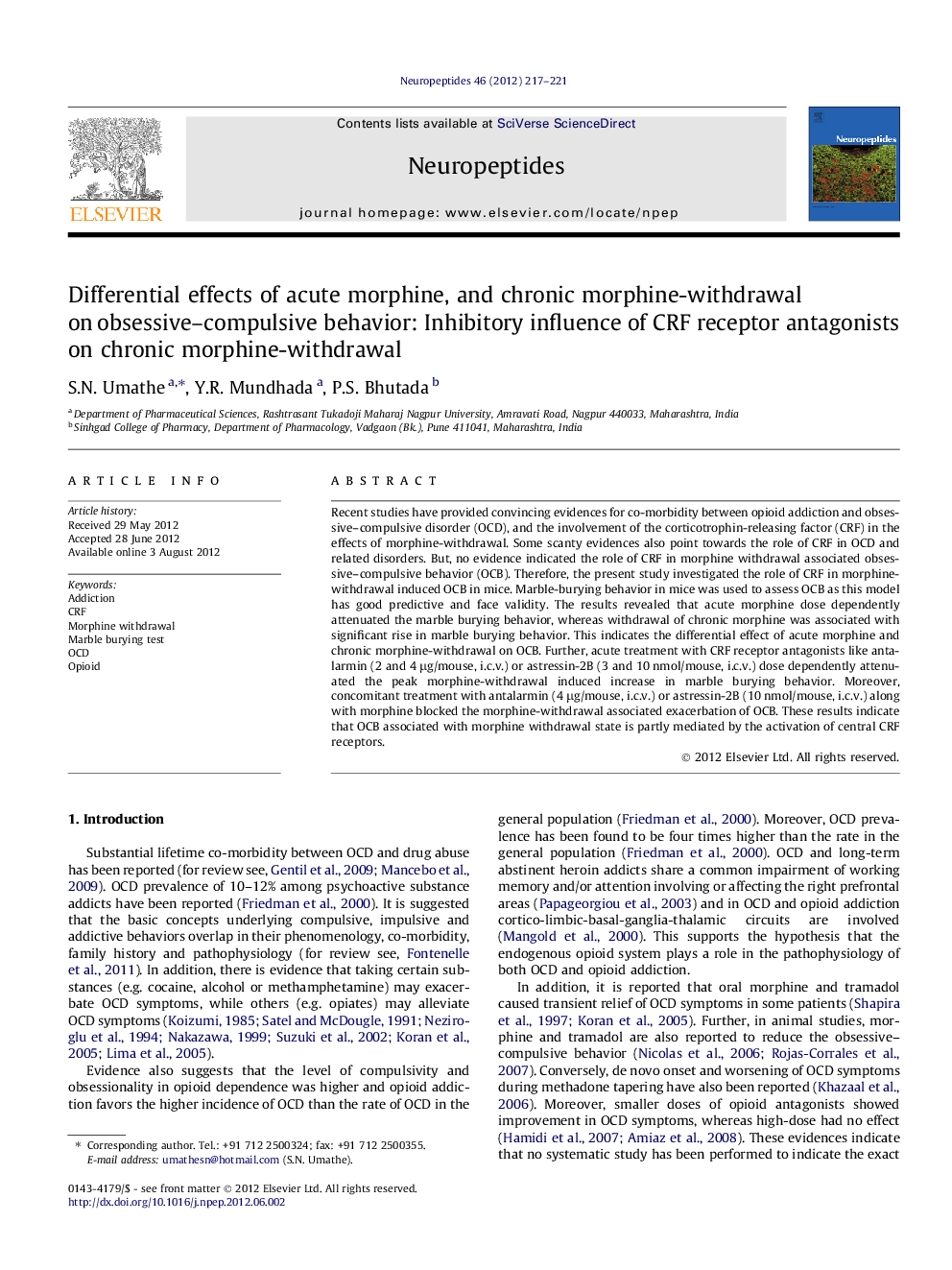| Article ID | Journal | Published Year | Pages | File Type |
|---|---|---|---|---|
| 2808197 | Neuropeptides | 2012 | 5 Pages |
Recent studies have provided convincing evidences for co-morbidity between opioid addiction and obsessive–compulsive disorder (OCD), and the involvement of the corticotrophin-releasing factor (CRF) in the effects of morphine-withdrawal. Some scanty evidences also point towards the role of CRF in OCD and related disorders. But, no evidence indicated the role of CRF in morphine withdrawal associated obsessive–compulsive behavior (OCB). Therefore, the present study investigated the role of CRF in morphine-withdrawal induced OCB in mice. Marble-burying behavior in mice was used to assess OCB as this model has good predictive and face validity. The results revealed that acute morphine dose dependently attenuated the marble burying behavior, whereas withdrawal of chronic morphine was associated with significant rise in marble burying behavior. This indicates the differential effect of acute morphine and chronic morphine-withdrawal on OCB. Further, acute treatment with CRF receptor antagonists like antalarmin (2 and 4 μg/mouse, i.c.v.) or astressin-2B (3 and 10 nmol/mouse, i.c.v.) dose dependently attenuated the peak morphine-withdrawal induced increase in marble burying behavior. Moreover, concomitant treatment with antalarmin (4 μg/mouse, i.c.v.) or astressin-2B (10 nmol/mouse, i.c.v.) along with morphine blocked the morphine-withdrawal associated exacerbation of OCB. These results indicate that OCB associated with morphine withdrawal state is partly mediated by the activation of central CRF receptors.
